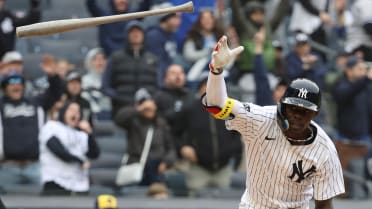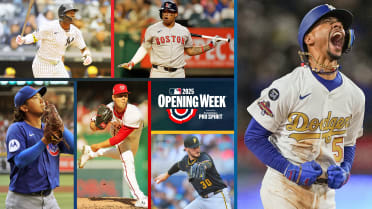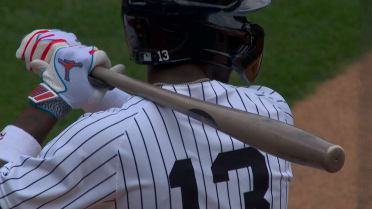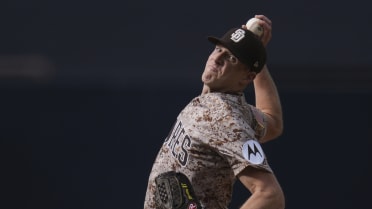Bud Harrelson, the scrappy, glove-first shortstop on the 1969 Miracle Mets, third-base coach for the 1986 World Series-winning team and later the club’s manager, and who tangled with Pete Rose in one of the wildest brawls in baseball history, died Wednesday in East Northport, New York. He was 79.
Harrelson had been in declining health since being diagnosed with Alzheimer’s disease in 2016 and in an assisted living facility since 2021.
The California native played 16 seasons from 1965 to 1980, the first 13 with New York. He is the only Met to be part of both of the franchise’s World Series wins and also played on the 1973 pennant-winning club that lost to the A’s.
In the era of slick-fielding, light-hitting shortstops, Harrelson was the quintessential model. A switch-hitter generously listed at 5-foot-11, 160 pounds, he totaled all of seven home runs (one an inside-the-parker) with 267 RBIs for his entire career to go along with a .236 lifetime batting average.
Harrelson’s defense was another story. He won a Gold Glove in 1971, finished with a career .969 fielding percentage and to this day is the Mets’ all-time leader in defensive WAR at 13.7. He played 54 consecutive errorless games in 1970, at the time a record for a shortstop.
“Little Buddy Harrelson,” as he was affectionately called, remains one of the most beloved players in Mets history. He is among New York’s career leaders in a number of categories, including fourth in games played (1,322) and plate appearances (5,083), seventh in hits (1,029) and eighth in stolen bases (115). He was elected to the Mets Hall of Fame in 1986. He was an NL All-Star reserve in 1970 and a starter in 1971, and he received down-ballot MVP votes both years, as well as in 1973.
Despite all that, there is no moment Harrelson is more identifiable with than the benches-clearing melee with Rose’s Reds in Game 3 of the 1973 National League Championship Series – perhaps the most famous fight in baseball history. After Cincinnati was two-hit in a Game 2 shutout, Harrelson innocently joked – or so he thought -- that the vaunted Big Red Machine “looked like me.” The Reds were furious.
The next day, in the fifth inning at Shea Stadium with the Mets leading 9-2, Rose slid high and hard into second base on what became an inning-ending 3-6-3 double play. After Harrelson’s return throw to John Milner at first, he exchanged words with the nearly 200-pound Rose. In an instant, Harrelson was punched to the ground and pinned, both benches emptied, more punches were thrown, bodies were pulled and grabbed. Incredibly, nobody was hurt or ejected.
When the game was set to resume, Mets fans were in a lathered frenzy, throwing objects at Rose in left field, leading manager Sparky Anderson to pull his team off the field. A contingent of Mets -- manager Yogi Berra, Willie Mays, Tom Seaver and others -- implored fans to stop.
“Being a little guy, I always wore a Superman T-shirt under my jersey,” Harrelson said, according to his SABR biography. “When the reporters came over after the game, I taped (an X) over the Superman logo and said, ‘It looks like Pete had a load of kryptonite today.’”
While the Mets won Game 3, Rose came back the next day and silenced Shea by hitting the game-winning, series-tying home run in the 12th inning of Game 4. But the Seaver-led Mets won Game 5 to send the New Yorkers to their second World Series in five years.
For Mets fans of a certain age – actually of multiple ages – that fight remains a signature moment in franchise history.
“I had fathers ask me about the fight,” Harrelson told Fox Sports in 2013. “Now their sons ask me about the fight.”
Harrelson and Rose wound up as teammates on the 1979 Phillies, and their paths crossed again years later.
“In 1995, Pete and I did a card show together,” Harrelson wrote in his 2012 autobiography “Turning Two: My Journey to the Top of the World and Back With the New York Mets,” “and I got him to autograph a picture of the fight, which he did. He wrote: “Thanks for making me famous,’ and he signed his name.”
-----
Derrel McKinley “Bud” Harrelson was born on June 6, 1944 – D-Day – in Niles, Calif., near Oakland and grew up in Hayward. He was called Bud, he wrote in his autobiography, because his older brother Dwane "called me Bubba because he couldn't say brother and that evolved into Bud." After attending San Francisco State University, Harrelson was signed by the Mets as an amateur free agent in 1963, beginning a nearly three-decade association with the franchise. He debuted in the Majors in late 1965 and became the Mets’ starting shortstop in 1967.
Harrelson missed part of the 1969 season fulfilling a military commitment, but he returned in time for the Amazin’ Mets’ historic run to the World Series in which they defeated the powerhouse 109-win Orioles. After delivering two key extra-base hits in a three-game sweep of the Braves in the inaugural NLCS, Harrelson didn’t hit much in the five-game rout of Baltimore, but he did anchor the infield defense with an error-free Series.
Before the 1978 season, an aging Harrelson was traded to the Phillies. After two years in Philadelphia, he signed as a free agent with the Rangers for one final season, completing his 16-year playing career.
It wasn’t long before Harrelson returned to the Mets in a variety of roles. He became the first-base coach for the 1982 season, then a SportsChannel broadcaster alongside Ralph Kiner and Tim McCarver in 1983. Harrelson managed the short-season Single-A Little Falls Mets to a New York-Penn League championship in 1984 and moved up to skipper the Single-A Columbia Mets in 1985. Early in the 1985 season, after Mets third-base coach Bobby Valentine left to manage the Rangers, New York manager Davey Johnson summoned Harrelson to the Majors.
The next year, Harrelson was a world champion once again, the only on-field link to the 1969 title team.
In his autobiography, Harrelson jokingly recounted what happened at the end of that surreal Game 6 against the Red Sox when Ray Knight scored on the fateful Bill Buckner error: “I not only waved him home, I accompanied him on his journey. If you look at the highlights of Knight scoring the winning run, you can see me running right along with him. … I had to slow down because I had Ray beat and I couldn’t touch home plate or get there before he did.”
Harrelson was elevated to manager after Johnson was fired 42 games into the 1990 season. He guided the Mets to an exceptional 71-49 finish, but their 91-71 record was good only for second place in the NL East. After going 74-80 in 1991, Harrelson was fired with seven games remaining in the season and the New Yorkers ended up in fifth place.
Harrelson’s baseball life was not done yet. He helped bring the sport to Long Island as part-owner of the independent Long Island Ducks, beginning play in 2000. He was their manager that first year and senior vice president for baseball operations. The team won the independent Atlantic League title in 2004. He remained one of the Ducks’ owners at the time of his passing.
Harrelson was diagnosed with Alzheimer’s disease in the summer of 2016 but didn’t go public until 2018. Meanwhile, his good friend Seaver had also been stricken with degenerative cognitive issues (dementia, not Alzheimer’s). It was a cruel coincidence for the two Northern Californians who became lifelong friends after meeting in the Minors in 1966 and were road roommates from 1968 until Seaver was traded in 1977.
In 2017, Art Shamsky arranged a trip of his fellow 1969 Mets to visit an ailing Seaver at his vineyard in Calistoga, Calif. Jerry Koosman, Ron Swoboda and Harrelson – still in the early stages of Alzheimer’s – joined Shamsky.
“We spent about eight hours with Tom and all of us just hanging out at his house,” Shamsky told the New York Daily News in December 2022. “And then went out to lunch and it was just a glorious time for about seven, eight hours where we could just reminisce about how important that team was to us and how different our lives have been from that October day when we won the World Series.
“I do think it was great for Buddy to spend some time with Tom,” Shamsky said, and it turned out to be the last time Harrelson saw his dear friend. Seaver died in 2020.
Reflecting on Harrelson, Shamsky said, “He was a terrific player and an integral part of the ’69 Mets. And I think that a legacy will live on forever. It’s one of the few teams in the history of baseball that people still talk about 50 years later. And when you talk about that team, it’s not just about certain guys, it was everybody who was part of that team who contributed something to the championship. I think people remember the greatness of him at shortstop and how well he played for the team …
“He’s also a terrific person and a great teammate.”
Len Hochberg is a homepage editor for MLB.com.




